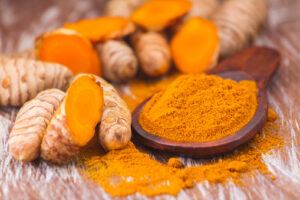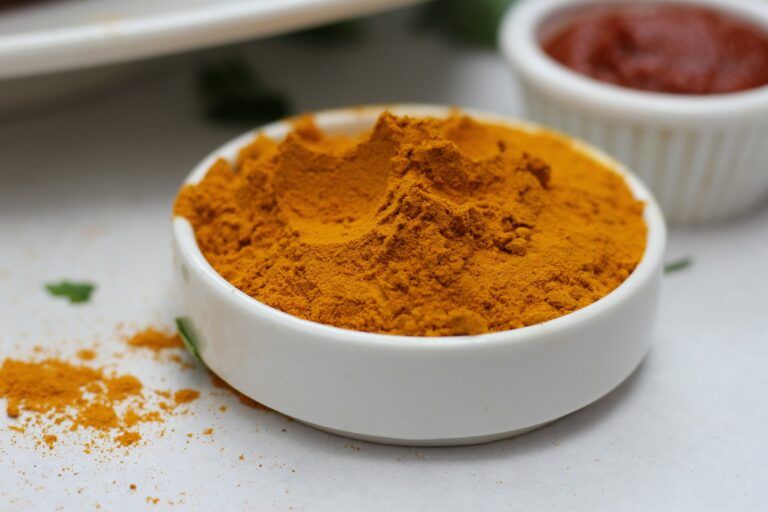Turmeric, a yellow-orange colored spice, is an ace up the sleeves when it comes to DIY treatments. It is effective in resolving a lot of diseases and serves as a reliever for other issues. The spice has been used for cases of hangover, indigestion, inflammation, and other skin issues. It’s also used for detoxification, and healing of wounds. Apart from DIY treatments, Turmeric has been used as an ingredient for many beauty care products manufactured in large companies. This answers the question “is turmeric good for your skin?”
What is Turmeric?
Turmeric, scientifically named Curcuma Longa, is a powder spice manufactured from the root of Curcuma Zedoaria which is a specie of ginger popularly found in Southeast Asia. It contains an ingredient called curcumin. The presence of this curcumin ingredient could be said to be what gives turmeric its entire essence. First, Turmeric’s yellow-orange tinge is as a result of curcumin. Second, this active ingredient makes Turmeric a powerful anti-inflammatory, antimicrobial, and antioxidant agent.
Is turmeric effective?
Many researchers and doctors all over the world have gathered that turmeric contains anti-inflammatory, antimicrobial, and antioxidant agents that can help to heal wounds, prevent skin issues or relief existing ones, and lighten dark spots on the skin. This spice has been found to be beneficial and is popularly used for medical and cosmetic purposes. Although there is the question about what exact method(s) of applying the spice is the best; it is not enough to nullify the fact that the spice is effective and contains ingredients that are healthy for the skin. Is turmeric safe for the skin? Yes! Therefore, if you are on the lookout for a natural skin treatment ingredient that you can grab off the top of your kitchen shelf or a local grocery shop, then turmeric is your first and easiest answer.

Benefits of turmeric
Turmeric has a lot of benefits to it. Following is a comprehensive list of what the spice offers when used for treatment. These includes:
- Antiinflammatory effects
- Antimicrobial effects
- Acts as an Antioxidant
Works against skin ailments
It is gathered that turmeric is effective against eczema, psoriasis, scabies, and acne. For psoriasis, an autoimmune disease where inflammation of the skin causes cells to build upon each other and leads to scale-like patches that could bleed sometimes, the primary active agent in turmeric inhibits these cell production and reduces the scale-like patches with the aid of its anti-inflammatory enzymes. For acne which is generally caused by a bacteria called Propionibacterium acnes, turmeric’s anti-inflammatory and antibacterial properties kick up against it.
Skin lightening
The antioxidant and anti-inflammatory property of the curcumin inside turmeric helps to lighten pigmentation. This is also effective for under-eye shadows and dark spots left by severe acne.
Skin rejuvenation
Apart from healing up wounds on the body, turmeric also prevents dry skin and rejuvenates parched spots or completely dry skin.
Anti-aging
The fact that turmeric helps with skin rejuvenation allows it to moderate the process of skin aging. It also diminishes wrinkles and improves skin elasticity by blocking enzymes like elastase that inhibits the ability of the skin to produce elastin. It is helpful to note that the body cannot produce proteins that help the skin to retain flexibility thereby leading to wrinkles, if the elastase enzyme is left on rampage.
It combats UV rays which lead to sunburns, hyperpigmentation, skin cancer, and fine lines. With the aid of its antioxidant compound, turmeric significantly helps to prevent free radicals like pollutive UV rays from irritating the skin.
It is also a potent ingredient for treating sores and wounds. It is known that the body self-cares for wounds by sending white blood cells and healing enzymes to the area of injury. This helps to boost healing effect and prevent infection. But this process also incurs some slight irritation like redness, heat, and pain around the wound. Turmeric helps to calm the swelling and reduces the irritation with the aid of its anti-inflammatory and oxidation agents. It also boosts collagen production and the skin’s ability to form new tissue.
To prevent oily skins
Turmeric is effective for oily skin as it regulates the production of sebum in the body (an oily substance that is produced by sebaceous glands).
Other possible benefits of turmeric as an ingredient for treatment is the erasure of stretch marks, cancer, scleroderma, and vitiligo.
Does using turmeric has any side effect?
The spice is deemed safe for use on the skin. But a major side effect of using topical turmeric, which often comes about after a prolonged use, is the surficial discoloration — leaving behind yellow stains. Apart from the skin staining, turmeric also has a particular odor which might put off some people. Meanwhile, there is a variation of turmeric known as the kasturi turmeric. With this kasturi turmeric, you could avoid the issue of skin discoloration.
Another possible side effect, which comes up in cases where turmeric is eaten instead of being applied on the body, is gastrointestinal problems like nausea and diarrhea. Also, beware of consuming turmeric orally, if you are on blood thinners or iron supplements. But as said before, these cases only come up due to prolonged usage or when you go overboard. Therefore, you are somehow in the clear — as long as you use it moderately. Always remember that there is an actual limit to the amount of the spice that your body can absorb. In cases where skin staining occur, exfoliating the skin is a worthwhile solution as the stain is often not permanent.

How to use turmeric
It will be good to know that there is the regular turmeric and kasturic turmeric; the two are different. Of the two variations, the kasturic turmeric is the best because it is non-staining. I.e it does not leave behind stains on the skin. But the limitation of the kasturi turmeric is that it is only to be applied externally because it is not edible and cannot be used for cooking. Also, it may be difficult to find in some areas as it is native to India.
Turmeric can be used along with honey and other home ingredients like milk. One of the content of milk is lactic acid which helps to promote skin texture by rejuvenating moisture and complexion. Gram flour (also called besan flour, chickpea flour, or garbanzo flour) works well with turmeric for exfoliating and cleansing the face. Wheat or rice flour is also a nice substitute. Below are some of the usage of turmeric:
For treatment of acne
Mix turmeric with water or use coconut or sesame oil as substitute. Dab the mixture on acne, acne scars, or blemishes. Another substitute is to mix turmeric with a proper amount of lemon or cucumber juice. Then smear it on the infected parts of the skin and leave for 10-15 minutes.
A different choice is to adopt the turmeric tea. Mix the side with water and drink as tea. But a better option is to mix the spice with milk.
For skin masks
The powdery spice can be used to formulate a mask, spread over the skin, and washed off later. Add a proper amount of sandalwood powder to turmeric powder and mix with orange juice. Apply the paste on the face, leave for 10-15 minutes, then wash away with lukewarm water.
To formulate a face cleanser
Add proper amount of turmeric to chickpea flour or rice flour. Add raw soy milk to the mixture to form a paste. Spread the paste evenly on the face and leave for 10-15 minutes before washing it off with lukewarm water. To make the paste last longer, it could be preserved n airtight bottles.
As night cream
Add some turmeric to milk or yoghurt to form a paste. Apply the paste on your face to form a mask and allow the mask to dry. Leave the mask on your face overnight. Wash off the mask in the morning with the aid of a gentle cleanser. It would be best to utilize old pillowcases or bedsheets (that you can afford getting stained).
Final note
There is no doubt about if turmeric is safe for the skin. Turmeric has been proven healthy and safe to use for the skin by many positive researches. It is agreed to possess anti-inflammatory, antioxidant, and antimicrobial agents that fight against skin diseases and help in healing wounds. It can be used in powder form. But there is also turmeric essential oil for those who worry about skin staining or odor. Before using turmeric, make sure you are not allergic to it. While using the spice, ensure that it is consumed moderately as it has a low bioavailability.

